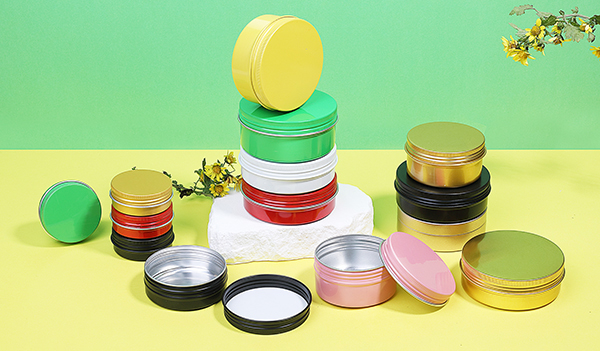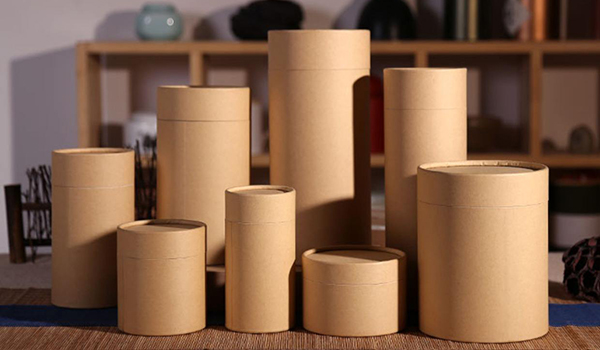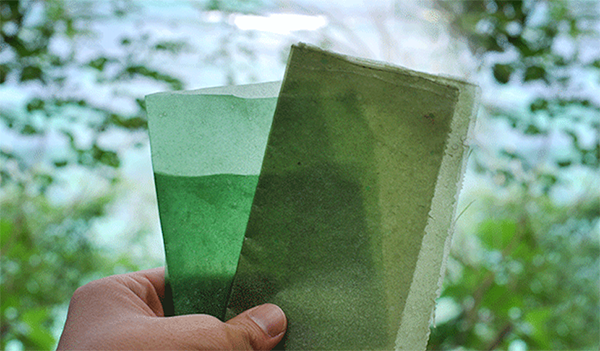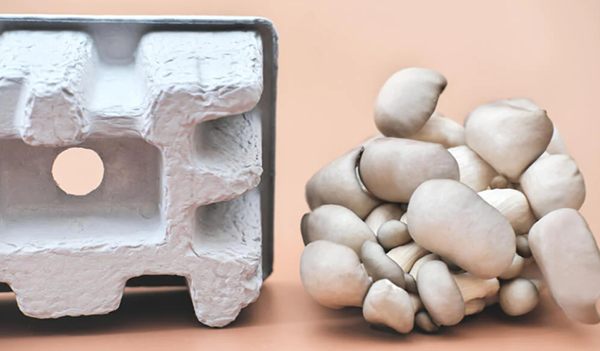Eco friendly packaging materials explained
Recent years have seen a surge in demand for eco friendly packaging materials, and a significant driver of this demand is the masses opting for eco-friendly packaging. As people gain more and more knowledge about the environmental impact of their lifestyles, many environment-cautious consumers are scrambling to reduce their ecological footprint and move towards sustainable living habits. One of the significant changes consumers are taking is the shift towards eco friendly packaging; this can be the general packaging on your goods in the conventional brick-and-mortar store, but a higher amount of packaging comes with goods bought online.
A few years ago, opting for eco friendly packaging materials was something that only modern and futuristic companies would promote. However, it is the bare minimum today, and eco-friendly packaging has become the industry standard worldwide. Eco friendly food packaging and eco friendly cosmetic packaging is becoming more commonplace as the packaging industry is trying its best to reduce the impact of their packaging materials on the environment.
In this blog post, we will explore what eco-friendly packaging is and why it is necessary to make a change towards it. We will also discuss the different types of environmentally friendly packaging materials that businesses can use. Lastly, we will look at how a business or a start-up can move towards adopting eco friendly packaging. So, keep reading to find out more!
What is Eco friendly packaging?
The word 'eco' as a descriptor of the word 'ecology' is more widely used in multiple industries to refer to goods or processes that result in reduced environmental impact compared to its conventional variant. Regarding packaging material, eco friendly packaging means material with a reduced ecological footprint. Unfortunately, there is no set standard against which the environmental footprint could be measured; thus, anything in general that decreases the environmental impact of the packaging material could be termed as 'eco-friendly packaging' - this includes recyclable, compostable, bio-degradable, and sustainable packaging material. These materials turned into eco friendly packaging materials resulting in corrugated cardboard boxes, glass bottles and jars, and aluminum tins, bottles, and boxes, to mention a few widely available on the market.
Why are eco friendly packaging materials a necessary change?
The foremost reason for changing to eco friendly packaging materials is to reduce pollution and the environmental impact of packaging waste. Conventional packaging materials made of plastics and polystyrene foam have a severe environmental impact as they are not recyclable and pollute landfills as they take up to hundreds of years to decompose.
Besides the environmental benefits, eco friendly packaging materials also bring health benefits, especially when considering single-use disposable packaging for edible goods. The food and beverage industry has a major problem with wastage, where most packaging materials are made of petroleum-based plastics and styrofoam, which is harmful to the environment and poses a potential health risk to consumers. Plastic packaging and utensils for edible goods are generally produced with BPA. This substance has shown potential health hazards in recent studies [1]. Thus health-conscious consumers are ditching traditional plastic packaging in favor of green and eco friendly packaging solutions.
Furthermore, opting for conventional unsustainable non-eco-friendly packaging in today's era can hurt a brand's image and result in the loss of potential customers. Associating eco-friendly and sustainable solutions with a brand image is necessary to compete in the market. It develops a positive image for your brand and wins the overall trust of customers who demand eco friendly packaging. In general, food and cosmetics companies were one of the earliest adopters of eco friendly food packaging and eco friendly cosmetic packaging solutions such as aluminum cans for beverages and cosmetics products. They aligned themselves with the market trend and consumers' demands to stay ahead of their competition.
Switching to eco friendly packaging makes economic sense as well. Plastic is an artificial material that uses petroleum as one of its key ingredients. Petroleum products are getting expensive to obtain as the global energy crisis gets intense. The prices of petrol-based products have skyrocketed and are still increasing. Another concern regarding petrol is its finite supply as a natural resource. This means that dependency on the supply line, which includes petroleum, is quite risky as the availability of such materials will only get slim henceforth. Therefore, it is best to switch to sustainable and eco friendly packaging options at the earliest.
What environmentally friendly packaging materials can businesses use?
Environmentally friendly packaging is one of the best ways to minimize a company's environmental impact. A recent survey showed that 75% of millennial consumers are more likely to buy a product if the packaging is eco-friendly [2]. Here are some popular environmentally friendly packaging solutions that businesses and consumers can consider:
Aluminum Packaging
Owing to its characteristics, aluminum packaging is an eco friendly packaging that is currently very popular in the market. You will find this type of packaging in the shape of aluminum tins and aluminum bottles. It is a lightweight yet strong material, strong enough that it is used in commercial airplanes. Its malleable nature allows it to be easily molded in different shapes, allowing companies to extend their product line through packaging design variation. Aluminum is also the most common metal found on the earth's surface, which ensures the constant availability of the material and gives security to the supply line of such a crucial industry. Aluminum is also 100% recyclable and can be recycled repeatedly without losing its original qualities. Its low melting point is one reason that makes it one of the most energy-efficient materials to recycle. It is estimated that only 5% of energy is required to recycle aluminum compared to extracting aluminum from raw virgin ore. This further ensures the availability of the materials and helps reduce the cost. Recycling aluminum also reduces the tremendous carbon footprint from nature, which allows the industry to fight against global warming. All in all, one of the best eco friendly packaging materials out there.

Paper Packaging
One might consider paper a fragile packaging material; however, it is sturdy when used for the right application. Paper is a sustainable, recyclable, and bio-degradable material - all the qualities an eco friendly packaging material needs to have. Paper can be easily designed into multiple packaging options, including paper wraps, boxes, covers, cardboard tube packaging, etc. Paper-made food packaging and utensils are also considered eco friendly food packaging substitutes for plastic packaging. It is a relatively inexpensive material compared to others; however, it is prone to water damage and wear and tear, thus limiting its use cases.

Glass Packaging
Another highly eco friendly packaging material is glass. It has been used as a packaging material in the form of glass jars and glass bottles for centuries. Glass is 100% recyclable repeatedly without any degradation in quality or characteristics. Furthermore, glass is made of natural resources like limestone and sand that is abundant in nature, a great benefit considering scalability. Its non-toxic and non-reactive characteristics make it a good choice for edible goods packaging. However, a major drawback of glass packaging is its fragile nature and heavy weight compared to paper and aluminum packaging, making it difficult and expensive to transport goods in glass packaging over long distances.

Seaweed packaging
Seaweed packaging material, although not as common as aluminum, paper, or glass, is one of the most sustainable and eco friendly packaging materials. It can be recycled multiple times, is biodegradable, and has a low carbon footprint; for these reasons, many companies are exploring the use of seaweed in their product packaging as a more sustainable alternative to synthetic materials. Seaweed is biodegradable and edible as well. It can be dissolved in water without creating harmful by-products, making it the perfect packaging option for loose teas, cereal, and other dry edible goods.

Other eco friendly packaging materials
Although there are more eco friendly packaging materials available in the market, we will not cover them all in this blog. However, some of these environmentally friendly packaging materials are worth mentioning: including corrugated bubble wrap, air pillows made from recycled content, mushroom packaging, biodegradable plastics, organic, ecological textiles, and edible films. Although yet to be mainstream, such materials have the potential to be the next generation of environmentally friendly packaging material with great benefits across the board.

How to adopt eco friendly packaging into your business?
Adopting eco friendly packaging is a major step towards promoting sustainability in your business. Here are four ways you can make the switch to eco-friendly packaging in your business:
- Make a change towards eco friendly packaging materials. Identify which of your current packaging material can use an upgrade and move towards more sustainable materials. One prominent example is using aluminum containers for cosmetics and edible goods. The nonreactive and robust nature of aluminum will ensure the safe transport of goods stored inside. The metal feel and eco-friendly aluminum material will attract customers to your product.
- Assess your current packaging and reduce packaging waste. Conventionally plastics account for a large percentage of the solid waste businesses generate. By incorporating recycled content and decreasing unnecessary packaging material, you can help reduce your business's environmental footprint, promote sustainable choices, and increase profits by eliminating waste.
- Offering variants of your product that comes in eco friendly packaging. This will attract a new set of customers to your products. You do not have to revamp your entire product line; taking small steps one at a time is a sustainable way of making change. You can always start by introducing new variants of current products that offer increased sustainability in their packaging.
- Not only using eco friendly packaging, but your business can also advocate and spread awareness about such materials. Set long-term sustainability goals and take effective steps toward these goals. Track your progress and share it with the world by promoting and advertising your sustainability results. Many customers will learn and appreciate your effort taken for the overall good of everyone; this can lead to a new stream of customers as well.
To conclude, eco friendly packaging materials are becoming essential to the packaging industry. It is only gaining more traction, and businesses are shifting toward sustainable packaging to reduce their environmental footprint, promote their brand image, and cash in on the economic gains of eco-friendly packaging. Customers are also actively demanding sustainable packaging for their goods, and many are even advocating for the overall benefits that sustainable packaging offers. Thus, spreading awareness and only bringing more and more consumers towards sustainable packaging solutions. Besides reducing the environmental impact, adopting eco friendly packaging also promotes a sustainable and responsible future for future generations.
[1] https://pubmed.ncbi.nlm.nih.gov/25813067/
[2] https://www.weforum.org/agenda/2021/05/eco-wakening-consumers-driving-sustainability/
